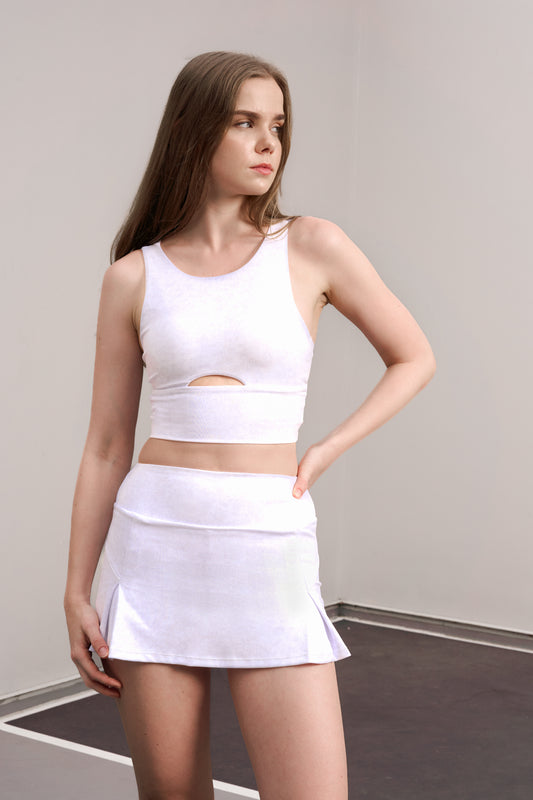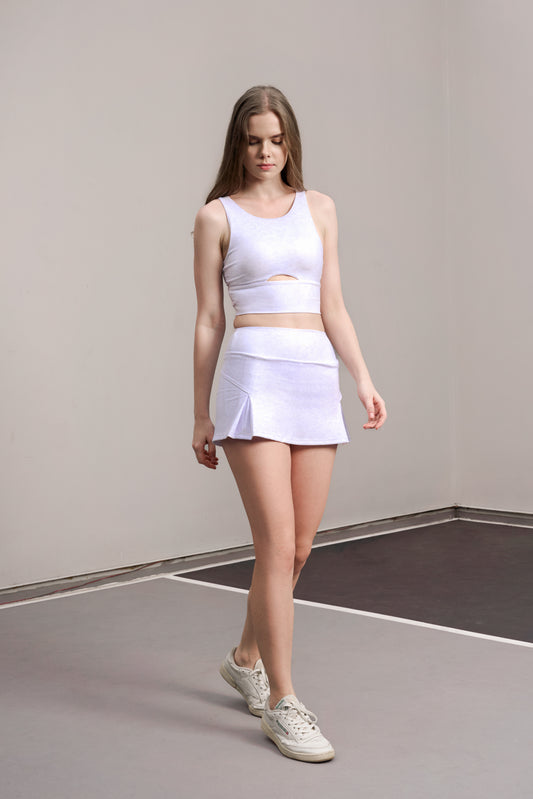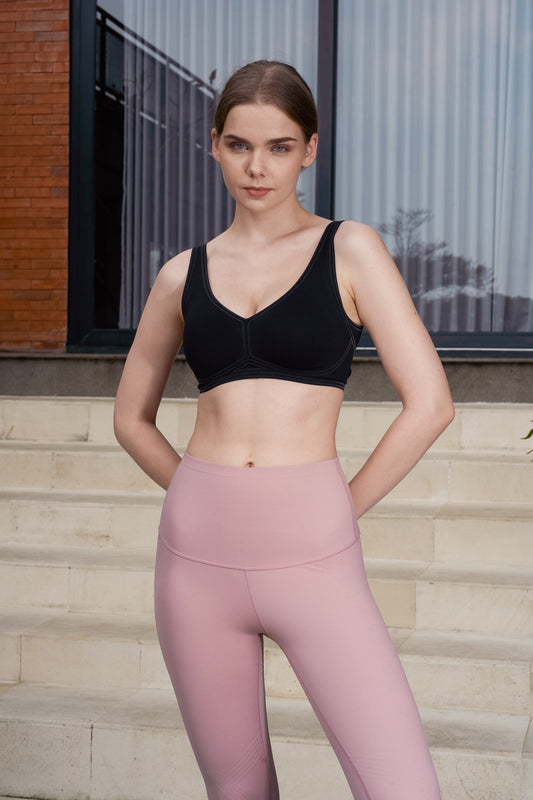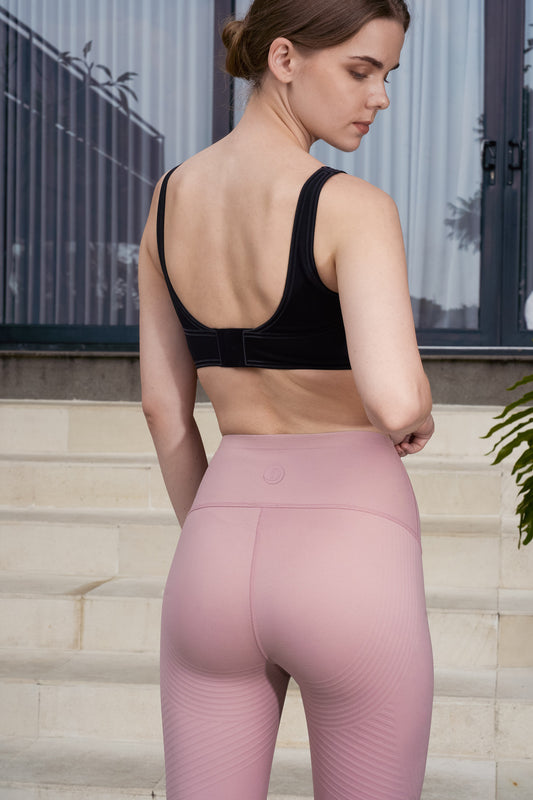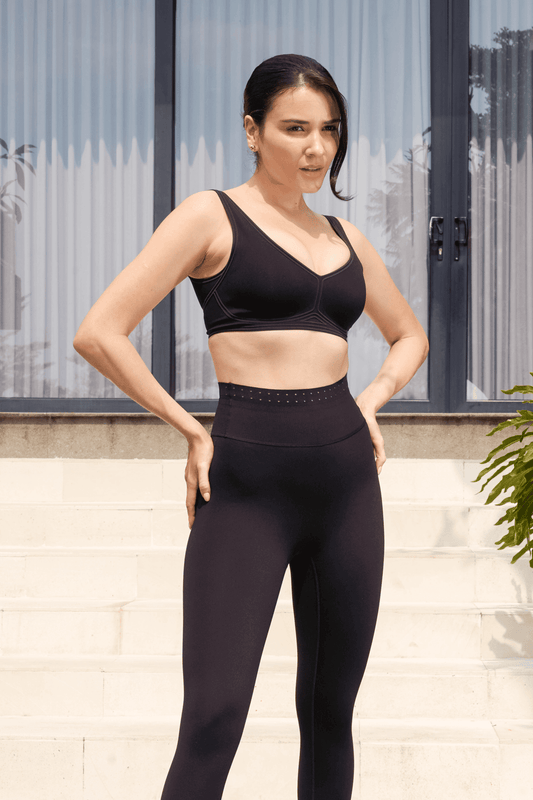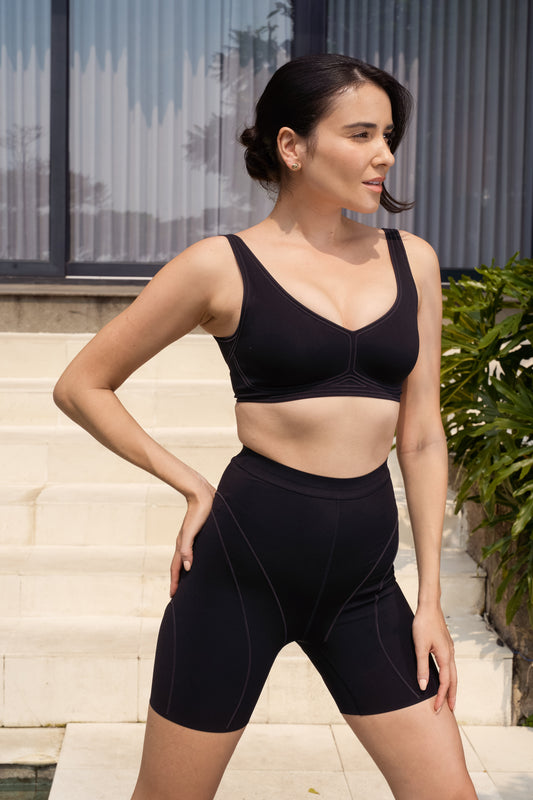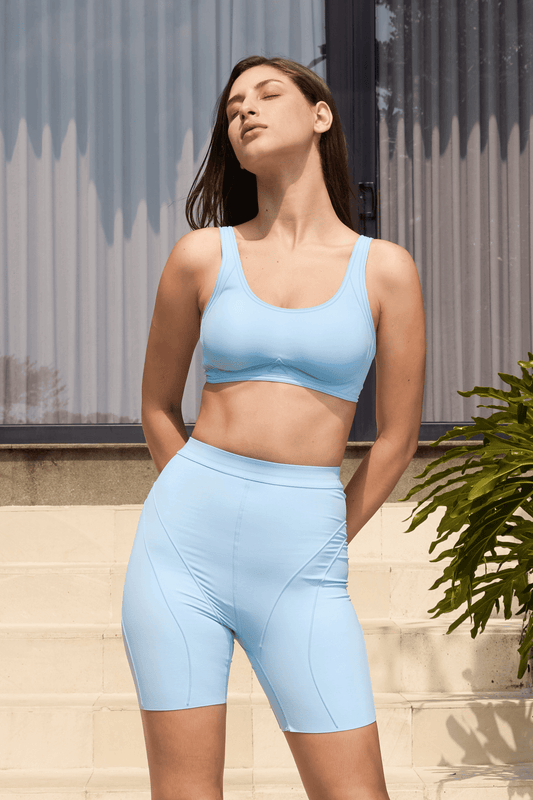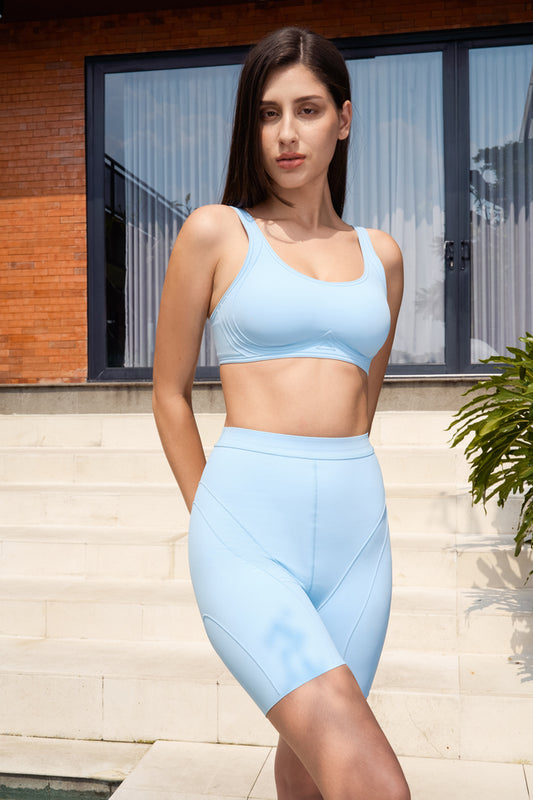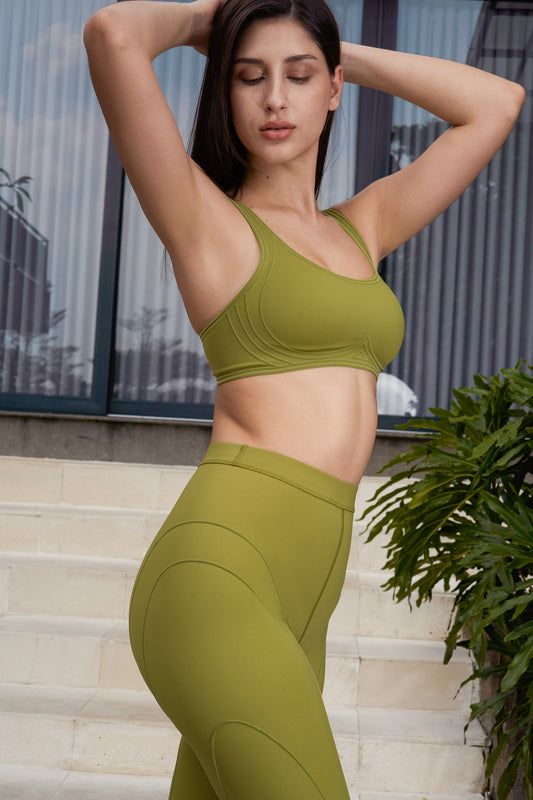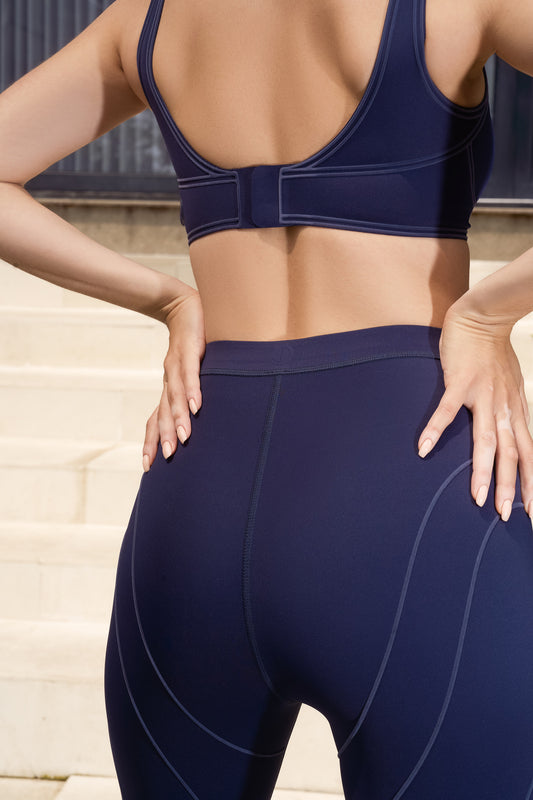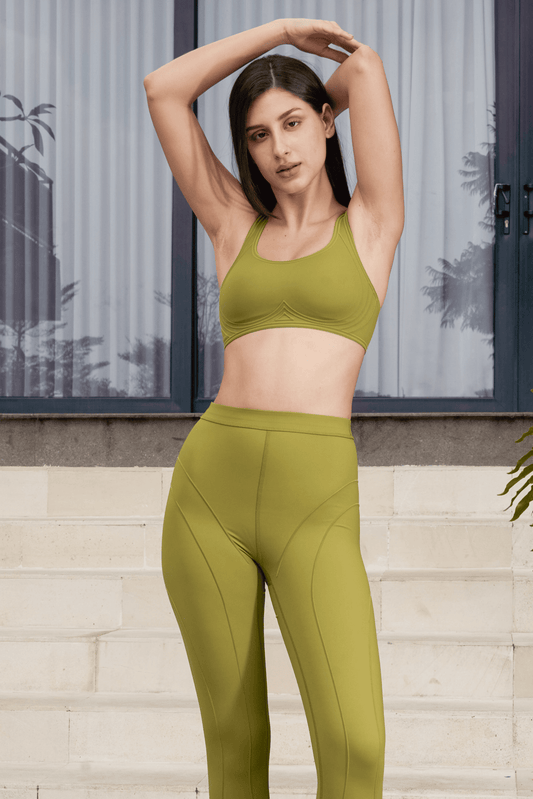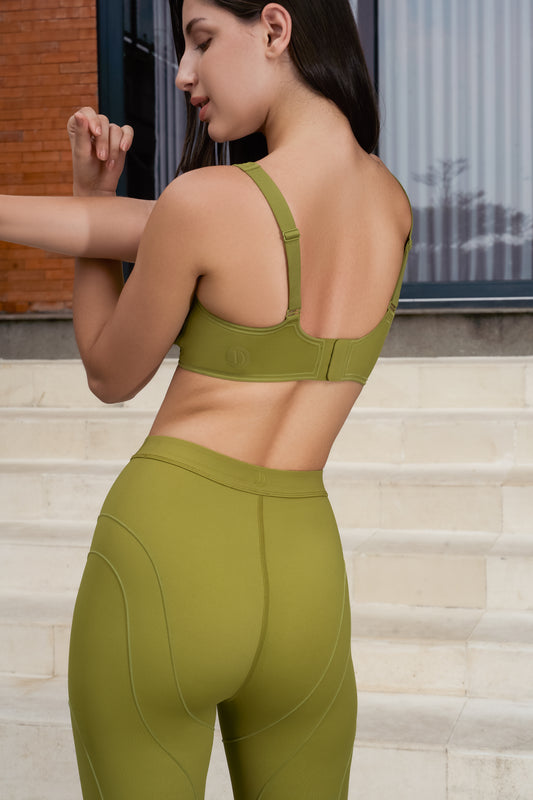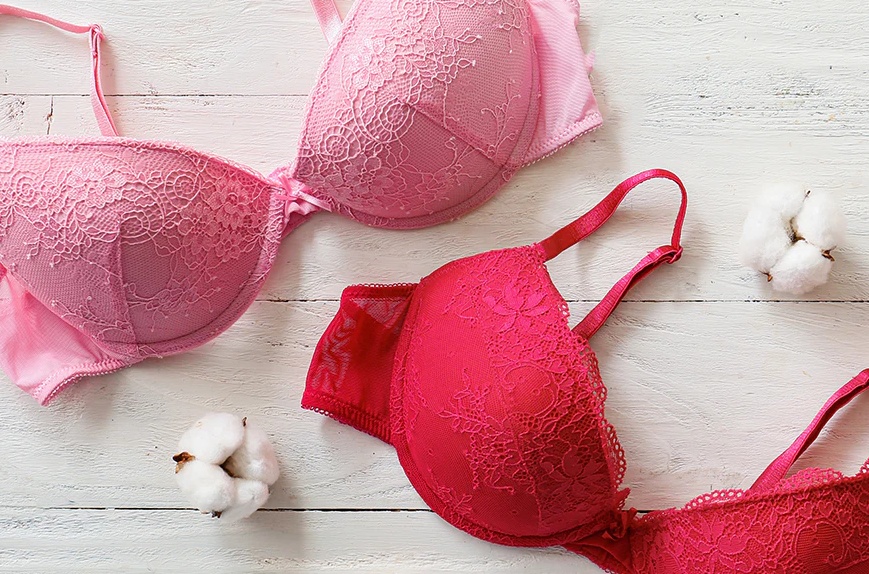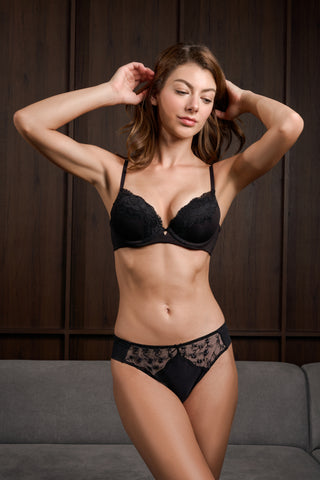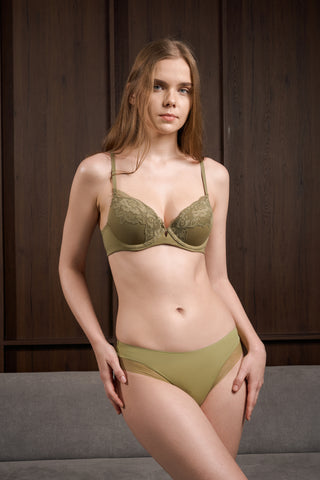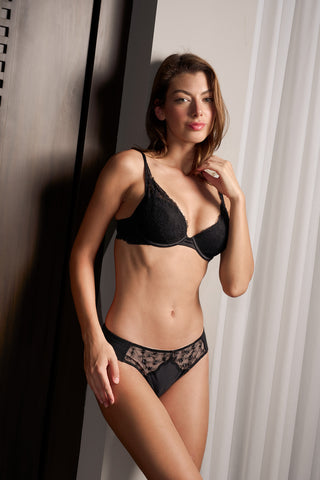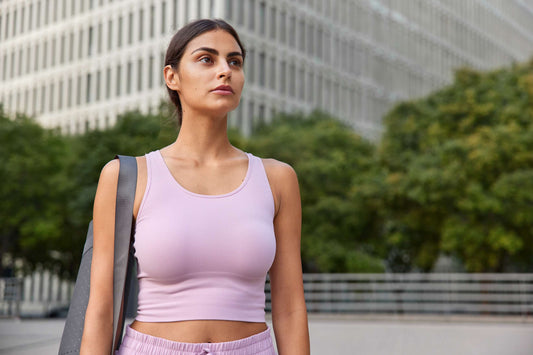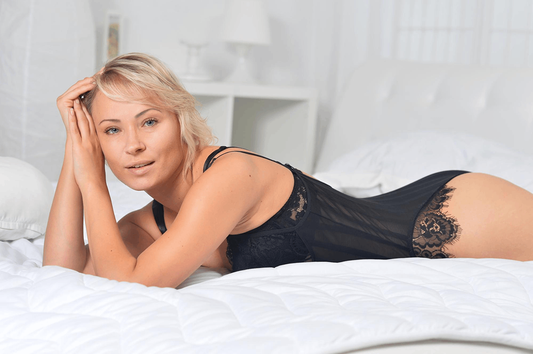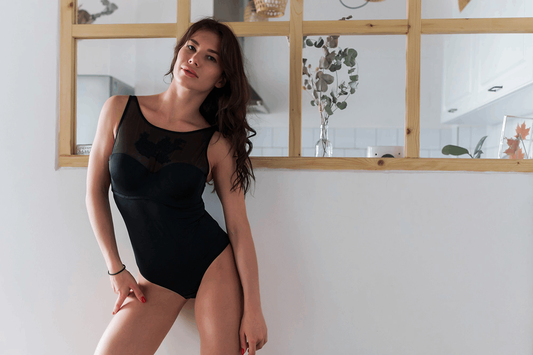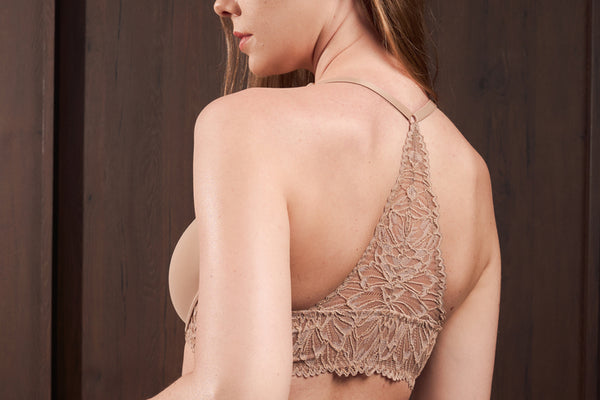Table of Content
Ever wonder why some bras feel like a dream, while others just don’t sit right no matter how cute they look? The secret often lies in the fabric. Yup, the bra material types used in each part can totally change how your bra fits, feels, and performs.
Some materials are soft and breathable, others firm and supportive. In this guide, we’re diving into the world of bra fabrics: what they’re made of, where they’re used, and how to choose the right one for your everyday comfort (and confidence!). Let’s check it out!
Different Parts of a Bra
Before we talk more about bra materials, let’s take a moment to understand the different parts of bra products. Knowing which part does what can help you choose the right fit, support, and fabric—because every part plays a role in how comfortable and supportive your bra feels! Here are the main parts of a bra:
1. Cups
The cups are the part of the bra that holds and shapes your breasts. They can be padded, molded, or unlined, depending on how much coverage and shaping you prefer. Some have seams or foam for structure, while others are smooth for a seamless look.
2. Band
The band is the part that wraps around your ribcage and gives most of the bra’s support. It should feel snug (but not too tight!) and sit flat against your body. A good-fitting band helps keep everything in place.
3. Straps and Adjusters
Straps go over your shoulders to help lift your bust and keep your bra in position. Adjusters allow you to loosen or tighten the straps so you get a perfect fit without them digging into your shoulders.
4. Hook and Eyes
These are the little clasp closures at the back (or sometimes front) of your bra. Most bras have 2–4 rows so you can adjust the fit over time. Always make sure the hooks are secure and lie flat.
5. Underwire
Not all bras have these, but if they do, underwires are the curved wires sewn into the bottom of the cups. They help lift and support your breasts, especially in structured or full-coverage bras.
A bra with this feature is called an underwire bra, and it’s a go-to for many women who want both shape and support. One of the top picks from Diana Intimates in this category is the Comfort 3D Push Up Underwire Bra With Modal Viscose Tea.
This beauty blends the lift of a push-up design with the softness of modal viscose, giving you a bra that feels as good as it looks. The 3D structure shapes your bust naturally without feeling stiff, while the smooth, breathable fabric keeps you comfortable from morning to night.
6. Seams
Seams are the stitch lines you might see on some bras, especially non-molded ones. They help shape the cups and give extra support. Some bras have seamless cups for a smoother look, while others use seams for more structure.
Common Bra Material Types by Section
Every part of a bra is designed with a purpose and the material used plays a huge role in how that part feels, fits, and performs. Let’s break it down by section, so you’ll know what to expect (and what to look for!) when shopping for your perfect bra.
A. Bra Cups & Straps
The cups and straps are where comfort really starts. They shape your bust and help the bra stay in place.
- Cotton
Cotton is a super soft, breathable fabric that’s great for everyday bras. It’s gentle on the skin and perfect for hot days, but can shrink or stretch over time.
- Spandex
Spandex (or elastane) is stretchy and flexible, so it helps the cups and straps fit snugly without losing shape. It’s often blended with other fabrics for comfort and movement.
- Polyester
Polyester is smooth and structured, making it a good pick for molded-cups and sports bras. It dries quickly, though it’s not as breathable as natural fabrics.
- Silk
Silk feels luxurious and smooth on the skin, often used in lingerie-style bras for its soft, elegant finish. It’s delicate and usually more decorative than supportive.
B. Bra Cup Linings
The lining inside the cups adds softness and a smooth feel while helping the bra hold its shape.
- Nylon Tricot
Nylon Tricot is a popular fabric for bra linings. It’s silky, cool to the touch, and holds structure well. This type is definitely perfect for everyday or supportive bras!
- Cotton Jersey
Cotton Jersey is soft, breathable, and comfortable for casual, daily wear. It feels great against the skin but doesn’t provide as much structure.
- Power Mesh
Power Mesh is stretchy and breathable, offering strong support for larger busts or activewear. It contours the cups without making the bra feel stiff.
C. Bra Padding
Padding gives bras shape and lift. Whether you want a natural look or added volume, the material makes all the difference.
- Foam Padding
Foam padding is the most common and it’s lightweight, keeps its shape, and offers a smooth silhouette under clothes.
- Fiberfill
Fiberfill is soft and light, offering gentle shaping without bulk. It’s best for a natural look but may flatten over time.
- Gel Padding
Gel padding adds lift and a natural-looking curve. It’s popular in push-up bras, but it can feel heavier and less breathable.
D. Bra Bands (Wings)
The band is the part that wraps around your back—it’s responsible for most of your bra’s support.
- Charmeuse
Charmeuse is a shiny, silky fabric used in luxurious bras. It looks beautiful but needs gentle care.
- Plush Elastic
Plush Elastic is stretchy, soft, and supportive. It moves easily with your body and is ideal for everyday or sports bras.
- Power Mesh
Power Mesh (Power Net) is strong and breathable, making it a favorite for high-support bras. It holds everything in place but may feel firmer than other materials.
E. Bra Decoration
Decorative fabrics add beauty and uniqueness to a bra. They’re mostly used on the outer layer or trims.
- Lace
Lace is often pursued as elegant and delicate—perfect for a romantic or feminine look. While pretty, it needs gentle washing and care.
- Tulle
Tulle is light and airy, often layered to add softness and sophistication. It looks delicate but doesn’t stretch much.
- Jacquard
Jacquard features woven patterns and texture, offering a more stylish and sturdy option for decorative bras. It’s durable and great for statement pieces.
How to Choose the Right Bra Material for You
True comfort begins with the right fabric. From soft cotton to structured mesh, every material serves a purpose. Here’s how to choose the bra material that truly supports you:
1. Comfort and Support
Your bra should feel good on your skin while keeping everything in place. Soft and breathable fabrics like cotton and power mesh help avoid irritation, while materials like foam and spandex give structure and support for all-day comfort.
2. Durability and Care
A great bra should survive regular use and washing. Fabrics like polyester and nylon hold up well, while delicate ones like lace and silk need extra care. Choose what fits your routine and how much maintenance you’re okay with.
3. Choose a High-Quality Brand
Fabric is important, but the brand behind it can make all the difference. A well-made bra isn’t just about looking pretty—it’s about lasting comfort, reliable support, and the confidence you feel every time you put it on. That’s why choosing a high-quality brand is key.
Take Diana Intimates, for example. DIANA is an intimate wear brand created to make you feel beautiful and comfortable in your own skin. Every piece is crafted with care, combining thoughtful design, premium materials, and meticulous craftsmanship so you never have to choose between style and comfort.
DIANA ensures that you’re supported in every sense of the word—physically and emotionally. With a brand like this, you’re not just buying a bra, you’re investing in something that loves you back.
4. Aesthetic and Design
Want a smooth, invisible look under clothes? Go for charmeuse or nylon. Prefer something pretty and feminine? Lace, tulle, and jacquard add stylish touches that make you feel extra special.
5. Costs and Accessibility
Some fabrics are more expensive than others. Silk and premium lace cost more, while cotton and polyester blends are more budget-friendly. Balance your choice based on what you need and how much you’re willing to spend.
6. Stretch and Flexibility
Fabrics like spandex and power mesh stretch to move with your body, making bras more flexible and comfy. These are great for active days or if you need a little extra wiggle room without losing support.
7. Market Preferences
Different regions and people have different needs. In hot climates, breathable fabrics like cotton work best. In colder areas, warmer and thicker fabrics are preferred. Think about what fits your environment and lifestyle.
Comfort Starts With the Right Choice!
The right bra is also about how it feels on your skin. Once you get to know the different bra material types, picking the perfect bra gets a whole lot easier. So, next time you’re shopping for a bra, don’t just look at the color or cut—feel the fabric, too.
Not all lingerie is created equal—and at Diana Intimates, that’s something we take seriously. Our goal is simple: to create beautifully made, high-quality bras that feel premium for everyone. From soft everyday styles to elegant pieces, we offer a variety of types of bras designed to fit your body and your lifestyle.
We carefully choose each lingerie fabric not just for looks, but for lasting comfort and support. Every product goes through a detailed process and strict quality checks to make sure it lives up to our promise. The result? Thoughtfully made lingerie you’ll love wearing, every single day!
FAQ
Which fabric is best for a bra?
Cotton for comfort, spandex for stretch, and nylon for support.
What are the materials used in bras?
Common ones include cotton, spandex, nylon, polyester, lace, and mesh.
